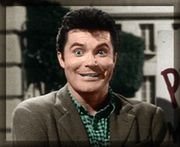Ok, here is my range report. If fact this is two range reports, as I am behind on reporting.
Today’s first. I went to Shooter’s Express in Belmont, NC. I took my Colt Combat Commander (series 70) in .38 super. The only ammo that they had in that caliber was Winchester white box (also called Winchester Paramilitary) in 130 gr. FMJ at $17.00 for 50 rounds. This was OK with me as hollow points would have been $15.95 for 20 rounds.
I had the range almost to myself so the distractions were kept to a minimum and I could concentrate on my shooting. I shot at 20 and 25 yards at the bullseye targets that the range has printed with their logo. The scoring area is about the size of a salad plate. Out of 50 rounds I had two flyers that stayed on the paper, but out of the scoring area. Almost everything else stayed in the black.
As regular readers of this blog know I am on a crusade to get people to practice shooting at longer ranges. The only other person at the range was shooting a 1911 at a full size human silhouette seven yards away. He was getting groups larger than mine. People, if you can shoot a group at 25 yards that you can cover with both hands you can hit someone dead center at 7 yards. If you can only shoot a group that size at 7 yards then at 25 you might manage to scare someone. Maybe.
If you own a gun for self defense practice regularly under conditions as realistic as you can make them. In a gunfight you will not “rise to the occasion”, instead you will default to your level of training. Train well.
This brings us to last week’s range session. I was shooting at Rex’s Indoor Range in Hendersonville, NC. It was Saturday so the place was crowded and Rex’s isn’t segregated into rifle/shotgun and handgun sections. This day the guy shooting next to me had an H&K G3 (select fire .308 caliber battle rifle) that had been modified to feed ammo from a linked belt. This meant that I got hammered by the concussive blast waves as he triggered short bursts downrange.
Now if I was a traditional NRA bullseye weenie (you know stand up straight, hold gun in one hand with the other hand in back pocket, check spotting scope every shot) I would have huffed to the management and complained. But since I’m practicing for a real-life encounter I loved it. In a real gunfight it is likely to be loud, with other folks shooting at you and you shooting back at them.
The more distracting shit you can overcome and still focus on your front sight the more likely it is that you’ll be the one who walks away alive. See above about training well.
I was shooting my 4” S&W 586. For those of you who don’t remember (or you kids who never learned) the S&W numbering system that is a blue steel .357 magnum revolver with the “L” frame. The “L” frame is a bit bigger and stronger than the older “K” frame in order to handle full time shooting of the full power magnum ammunition. This was made necessary back when the most popular police handgun was the .357. It occurred to a number of police departments that if the cops practiced with the same ammo that they carried there would be fewer dead cops.
The problem with this is that the lighter framed revolvers weren’t designed to shoot a steady diet of magnum ammo. They were designed to shoot a lot of .38 special and a little .357 magnum. So the guns (mostly S&W model 19 and 66 and Ruger Service Six and Security Six revolvers) began to wear out and break down.
Ruger was the first gun company to come up with an answer for this. The GP-100 was a big beefy revolver that could handle lots and lots of full power shooting. Smith and Wesson came along a little later with the “L” frame model 686 (stainless steel) and 586 (blue steel). The S&W isn’t as big or beefy as the Ruger because the S&W is hammer forged while the Ruger is an investment casting. But I’m digressing. . .
I bought a box of .357 magnum 158 gr. JSP (jacketed soft points). I would have preferred 125 gr. Hollow points, but they had none except for premium Cor-Bon at $15.95 for a box of 20. (Note to self. Set your fracking reloading press back up).
This is why it is important to practice regularly. I discovered that there is a problem with the 586. Every once in a while it would shave off some jacket material and throw it back into my face (always wear safety glasses). This is caused by a timing problem (the cylinder and barrel don’t line up exactly right). This doesn’t fix itself so it is off to the gunsmith. Some internet research shows that Andy Cannon is still out there working on S&W revolvers so I’ll send it off to him for the repair and as long as its there he can do the whole action job/carry package.
I finished shooting the box of .357’s at 20 and 25 yards. Accuracy was acceptable, all shots in the scoring area of a bullseye target.
By this time (after 50 rounds of full power magnum rounds) I was ready for a break so I shot 5 rounds through my S&W 642. This is a small five-shot 21/2 inch barrel “J” frame revolver with an aluminum frame to save weight. This gun is rated for +P ammunition, but it has a service life measured in several hundred rounds. So I don’t shoot it often, just once ever year or so to keep myself familiar with it. This is a gun that it is OK to shoot at seven yards. It is a short range last ditch emergency weapon. It shot a nice tight group with .38 spl. RNL. Coming right after shooting the magnum there was no detected recoil.
Next I gave myself a special treat. I rented a Glock in .45 GAP. I have been interested in this pistol/caliber ever since it came out and I have to say that I was impressed. It was very accurate and recoil was very mild. I was shooting American Eagle 185 gr. FMJ. From what I’ve seen the ballistics on this round are similar to the non + P .45 ACP. I will wait for some field reports of actual gunfight results before I’ll lay my money down for one, but I remain intrigued.
Tuesday, March 07, 2006
Range Report
Posted by
Lemuel Calhoon
at
6:08 PM
![]()
Subscribe to:
Comment Feed (RSS)










|